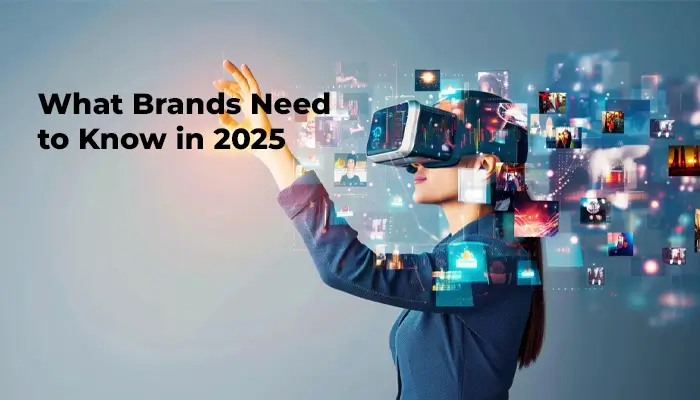
How to Add Multilingual Support to Your WordPress Website (2025 Guide)
August 14, 2025
Cloud Storage Showdown: Best Tools for Designers & Marketers in 2025
August 18, 2025Marketing is no longer just about showing ads; it’s about creating experiences. In 2025, Augmented Reality (AR) and Virtual Reality (VR) are transforming how brands connect with customers by making campaigns more interactive, immersive and memorable.
From trying on clothes virtually to exploring 3D product demos, AR and VR have gone from futuristic concepts to mainstream marketing tools. For brands, adopting these technologies is becoming essential to stand out and engage audiences in deeper ways.
Why AR & VR Matter in Marketing
Consumer behavior has shifted dramatically in recent years. People now expect personalized, interactive experiences before making purchase decisions. AR and VR meet this demand by:
- Allowing customers to visualize products in real environments.
- Enhancing brand storytelling through immersive experiences.
- Building trust and confidence before purchase.
According to Statista, the global AR/VR market is expected to surpass $100 billion by 2026, proving it’s not a trend, it’s the future.
AR in Action: Bringing Products to Life
Augmented Reality overlays digital elements into the real world via smartphones or AR glasses. Brands are using AR to:
- Retail & Fashion: Apps like IKEA Place and Zara AR let users see furniture in their homes or try clothes virtually.
- Beauty Industry: L’Oréal’s AR-powered “Virtual Try-On” allows customers to test makeup shades before buying.
- E-commerce: Amazon’s AR View gives shoppers a real-time look at products in their space.
For marketers, AR is a powerful conversion tool, reducing hesitation and increasing confidence in online purchases.
VR in Action: Creating Immersive Brand Experiences
Virtual Reality takes immersion a step further by transporting users into fully digital environments. Brands are leveraging VR for:
- Real Estate: Virtual property tours eliminate the need for physical visits.
- Travel & Hospitality: Marriott has used VR to give people a preview of exotic destinations.
- Events & Product Launches: Brands like Nike and BMW create virtual showrooms where users can interact with products.
VR isn’t just about showcasing products; it’s about building emotional connections with consumers through memorable experiences.
The UX Advantage: Deeper Customer Engagement
AR and VR don’t just enhance marketing campaigns; they also improve user experience (UX). By offering interactive demos, immersive storytelling and personalized journeys, brands can keep users engaged longer and create lasting impressions.
The longer consumers interact with a brand, the stronger their connection becomes and the more likely they are to convert.
Challenges to Consider
While the potential is huge, brands must address:
- Accessibility: Not all consumers have VR headsets, so campaigns should remain mobile-friendly.
- Cost: High-quality AR/VR experiences require investment.
- Ethics & Privacy: Collecting behavioral data in immersive environments must be handled responsibly.
Conclusion
In 2025, AR and VR are no longer optional experiments, they’re strategic marketing tools. From e-commerce to real estate, these technologies are helping brands create more engaging, personalized and interactive campaigns.
Businesses that embrace AR and VR today will be better positioned to capture consumer attention and loyalty tomorrow.
If you have any questions regarding “Using AR & VR in Your Marketing” feel free to contact us. For inquiries and consultations, call us at: +92 321 4808303 or Email us at: hello@owaisgilani.com.
Disclaimer: The information shared on this website is for educational and informational purposes only and reflects my personal views and experiences. While I strive to provide accurate and helpful content, readers should use their own judgment and consult with a qualified professional before making any decisions based on the information here. I am not responsible for any actions taken based on this content. Feel free to reach out to me if you need clarification or have questions before using any part of this information.



